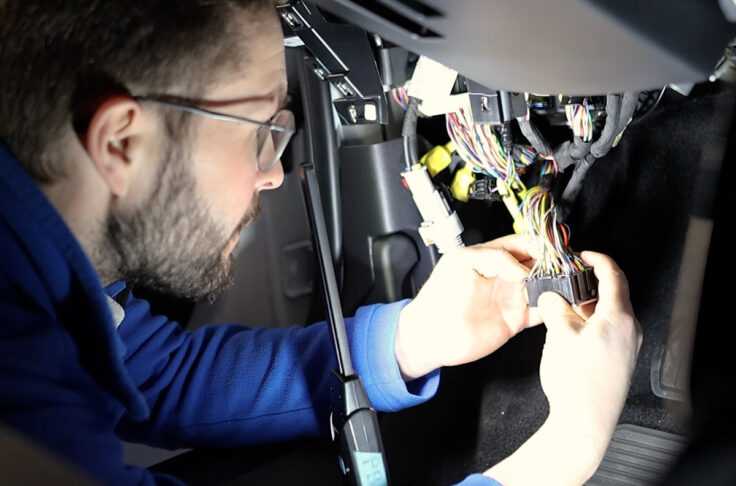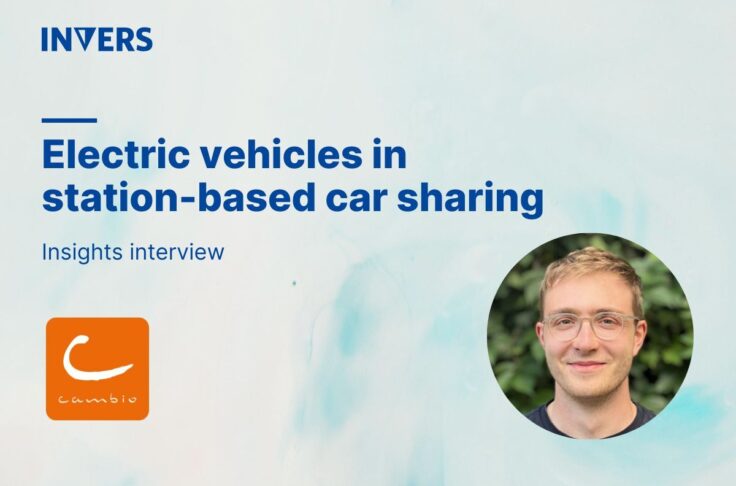Beyond the Lock and Immobilizer: Protect Your Car Sharing Vehicles from Theft

Vehicle theft is a growing and significant concern. Using modern techniques, what used to take minutes can now be done in as little as 15 seconds. While central locking systems provide a basic level of protection, they cannot counter sophisticated theft methods. Thieves can still quickly drive off with brand new, top-of-the-line vehicles.
Keeping your cars secure takes much more than locking doors and closing windows. In this article, we will explore the vital role of immobilizers in ensuring comprehensive vehicle security and why carsharing and car rental operators should prioritize them.
Table of Contents
- Central locks: the convenience of keyless entry
- Beyond locked doors – more is needed to prevent car theft
- Immobilizers: what are they, and what do they do?
- Will an immobilizer protect your car from being stolen?
- Bolstering security further with telematics-integrated immobilization
- Real-life applications of telematics-integrated immobilization
Central locks: the convenience of keyless entry
For decades, vehicle owners have relied on central locks for security. Modern ones work like a well-orchestrated dance:
- You press a button on your key fob.
- Radio waves carry a unique, dynamic code to your car.
- The car’s ECU verifies the code.
Electric actuators in each door then spring into action, and presto! All doors are locked or unlocked in perfect sync.
In the shared mobility world, central locks get a high-tech makeover. A user taps “unlock” on their mobile app. The app signals to the telematics device installed in the car, which sends the lock (or unlock) signal to the central locking system. The doors oblige, and the app confirms the user’s action–and you just offered your customer the convenience of keyless entry.

Beyond locked doors – more is needed to prevent car theft
Central locks may seem like excellent protection, but in reality, they don’t do enough to keep cars secured. Locks are vulnerable to picking and key cloning and can be bypassed entirely by breaking windows.
But most importantly, door locks only secure entry points, leaving the ignition vulnerable. If there is no immobilizer system, or if the fleet operator turned it off because of bad security protocols or over-reliance on central locks, then determined car thieves can break the windows and start the engine via hotwiring or other ignition bypass methods.
Immobilizers: what are they, and what do they do?
Immobilizers, mandatory in many regions since the late ’90s, have significantly reduced auto theft. They consist of a transponder in the key and a receiver in the car. When starting the engine, the car verifies the key’s signal; if it matches, the engine starts. Essentially, immobilizers prevent the engine from starting without the correct key, thwarting hotwiring attempts. Modern immobilizers use dynamic codes, making them difficult to bypass.
Will an immobilizer protect your car from being stolen?
The answer is no.
While immobilizers deter old-school thieves, they are less effective against advanced theft techniques. They remain crucial for vehicle security but are not infallible, and they are no longer enough to prevent theft on their own.

Bolstering security with further telematics-integrated immobilization
Ultimately, your vehicle security goal is to make stealing your car harder than the one next to it. Implementing immobilizers and integrating them with telematics systems can significantly enhance your vehicle’s security.
Even if an unauthorized user gains access to the booking app or manages to break into the vehicle and get ahold of the physical key, they cannot drive away without CloudBoxx unlocking the immobilizer. This additional layer of security maintains vehicle protection (i.e., car thieves cannot start the car) even if the physical key is compromised.
Other benefits:
- Enhanced reliability: CloudBoxx enables real-time data exchange and command execution by utilizing wired connections via the vehicle’s CAN bus. The CloudBoxx is hidden out of sight, making it inaccessible to tampering or disconnection. This also ensures that its connections remain secure and protected.
- Improved accessibility: The wired connection ensures consistent functionality in remote areas where cellular coverage may be limited. This eliminates scenarios where customers might be stranded due to network problems.
- Independent system control: The CAN bus integration allows CloudBoxx to manage the central locking system and immobilizer separately. This granular control enhances security by enabling multi-factor authentication protocols.
Real-life applications of telematics-integrated immobilization
An integrated, comprehensive system offers the key advantage of responding quickly to security breaches such as vandalism, theft, and towing. This capability enables immediate action, such as remotely immobilizing a vehicle, which can prevent potential theft or unauthorized use.
Motor pool operators can improve safety and assist employees in emergencies by remotely locking, immobilizing, and tracking vehicles. This ensures drivers are not obliged to stay with the vehicle in unsafe situations.
Operational efficiency is another significant benefit. An integrated system streamlines security management for large fleets, allowing operators to control and monitor all vehicles from a central dashboard. This consolidation simplifies processes and reduces the time and effort required to manage vehicle security.
Securing Your Shared Mobility Future
While central locking systems are useful, today’s car-sharing and rental operators need more to secure their vehicles. Immobilizers provide additional protection by preventing engines from starting without proper authentication. Integrating immobilizers with telematics systems further enhances security. While there may be upfront costs, the long-term benefits and potential savings from reduced theft and damage make it a worthwhile investment—enhanced security leads to fewer losses, lower insurance premiums, and increased customer trust.
Remember:
- Central locks are your first line of defense against unauthorized access.
- Immobilizers are your critical safeguard against theft and unauthorized use.
- Modern telematics systems offer superior control and management of both systems.
- Prioritizing immobilizer control is key in the shared mobility context.
Ready to reduce your fleet’s theft risk by up to 70% with advanced telematics solutions? Contact us today to learn more about implementing them for your shared mobility operation.
Let’s work together to create a safer, more efficient future for shared transportation.


